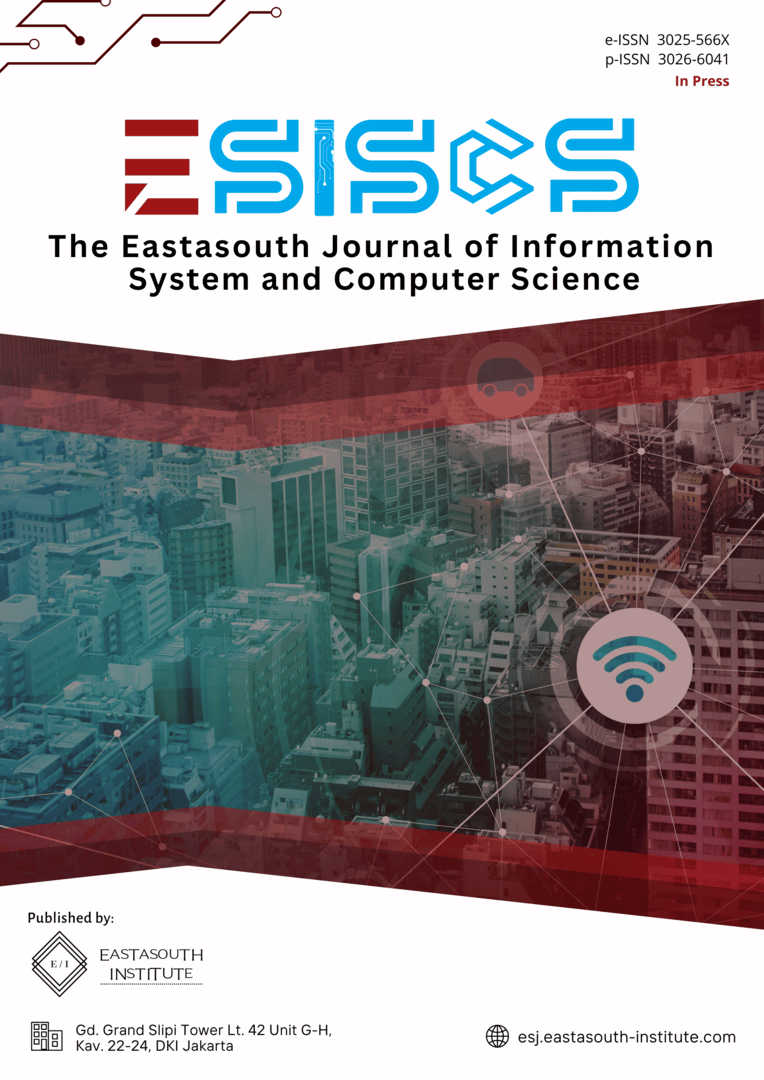Bibliometric Mapping of Extended Reality (XR) in Education and Business Domains
Main Article Content
Abstract
This study presents a comprehensive bibliometric mapping of Extended Reality (XR) research in education and business domains, providing insights into thematic trends, collaborative networks, and emerging areas of interest. Using the Scopus database as the primary data source, publications from 2010 to 2025 were retrieved and analyzed exclusively with VOSviewer to generate keyword co-occurrence, author collaboration, country collaboration, temporal evolution, and density visualizations. The results reveal that virtual reality, augmented reality, extended reality, and engineering education are the most prominent and interconnected themes, with newer research increasingly focusing on metaverse, artificial intelligence, and Industry 4.0 integration. Co-authorship and country network maps show that the United States, Italy, Germany, and India are central hubs driving global research partnerships, while author collaborations cluster into specialized yet interconnected groups. The study highlights how education-oriented XR research emphasizes immersive learning, e-learning, and gamification, while business-focused studies target marketing innovation, customer engagement, and sustainability. These findings contribute to a holistic understanding of XR’s interdisciplinary evolution, offering strategic guidance for researchers, educators, industry leaders, and policymakers to foster innovation and cross-domain integration.
Article Details

This work is licensed under a Creative Commons Attribution-ShareAlike 4.0 International License.
References
S. Zhang and W. Li, “Applying extended reality (XR) technology in commerce, management, and business applications: A survey,” in 2024 4th International Conference on Computer, Control and Robotics (ICCCR), IEEE, 2024, pp. 108–113.
S. Doolani et al., “A review of extended reality (xr) technologies for manufacturing training,” Technologies, vol. 8, no. 4, p. 77, 2020.
G. Zwoliński et al., “Extended reality in education and training: Case studies in management education,” Electronics, vol. 11, no. 3, p. 336, 2022.
A. Alnagrat, R. C. Ismail, S. Z. S. Idrus, and R. M. A. Alfaqi, “A review of extended reality (XR) technologies in the future of human education: Current trend and future opportunity,” J. Hum. Centered Technol., vol. 1, no. 2, pp. 81–96, 2022.
A. D. Samala, L. Bojic, R. Soha, Y. Miftachul Arif, D. Tsoy, and D. Pereira Coelho, “Extended reality for education: Mapping current trends, challenges, and applications,” J. Pendidik. Teknol. Kejuru., vol. 7, no. 3, pp. 140–169, 2024.
P. Johannesson and J. Karlsson, “The early stages of extended reality: An analysis of the opportunities and challenges faced by early stage businesses within the extended reality (XR) industry,” 2023.
D. Mourtzis, J. Angelopoulos, and N. Panopoulos, “Extended reality (xr) applications for engineering education 5.0,” in Proceedings of the 13th conference on learning factories (CLF 2023), 2023.
D. Bairaktarova, A. Valentine, and R. Ghannam, “The use of extended reality (XR), wearable, and haptic technologies for learning across engineering disciplines,” in International Handbook of Engineering Education Research, Routledge, 2023, pp. 501–524.
D. Burke, H. Crompton, and C. Nickel, “The Use of Extended Reality (XR) in Higher Education: A Systematic Review,” TechTrends, pp. 1–14, 2025.
T.-C. Huang and H.-P. Tseng, “Extended reality in applied sciences education: A systematic review,” Appl. Sci., vol. 15, no. 7, p. 4038, 2025.
Y. K. Dwivedi et al., “Metaverse beyond the hype: Multidisciplinary perspectives on emerging challenges, opportunities, and agenda for research, practice and policy,” Int. J. Inf. Manage., vol. 66, p. 102542, 2022.
M. Wang, H. Yu, Z. Bell, and X. Chu, “Constructing an edu-metaverse ecosystem: A new and innovative framework,” IEEE Trans. Learn. Technol., vol. 15, no. 6, pp. 685–696, 2022.
C. M. Leitch and R. T. Harrison, “A process model for entrepreneurship education and development,” Int. J. Entrep. Behav. Res., vol. 5, no. 3, pp. 83–109, 1999.
K. W. Van Dongen et al., “European consensus on a competency-based virtual reality training program for basic endoscopic surgical psychomotor skills,” Surg. Endosc., vol. 25, no. 1, pp. 166–171, 2011.
A. Roberts, P. Chou, and G. Ching, “Contemporary trends in East Asian higher education: Dispositions of international students in a Taiwan university,” High. Educ., vol. 59, no. 2, pp. 149–166, 2010.
A. Pyae et al., “Exploring user experience and usability in a metaverse learning environment for students: A usability study of the artificial intelligence, innovation, and society (AIIS),” Electronics, vol. 12, no. 20, p. 4283, 2023.
M. H. Alsamh, A. Hawbani, S. Kumar, and S. H. Alsamhi, “Multisensory metaverse-6G: A new paradigm of commerce and education,” IEEE Access, vol. 12, pp. 75657–75677, 2024.
L. B. Rosenberg, “Regulating the Metaverse, a Blueprint for the Future,” in International Conference on Extended Reality, Springer, 2022, pp. 263–272.
G. Gigante and A. Zago, “DARQ technologies in the financial sector: artificial intelligence applications in personalized banking,” Qual. Res. Financ. Mark., vol. 15, no. 1, pp. 29–57, 2023.

